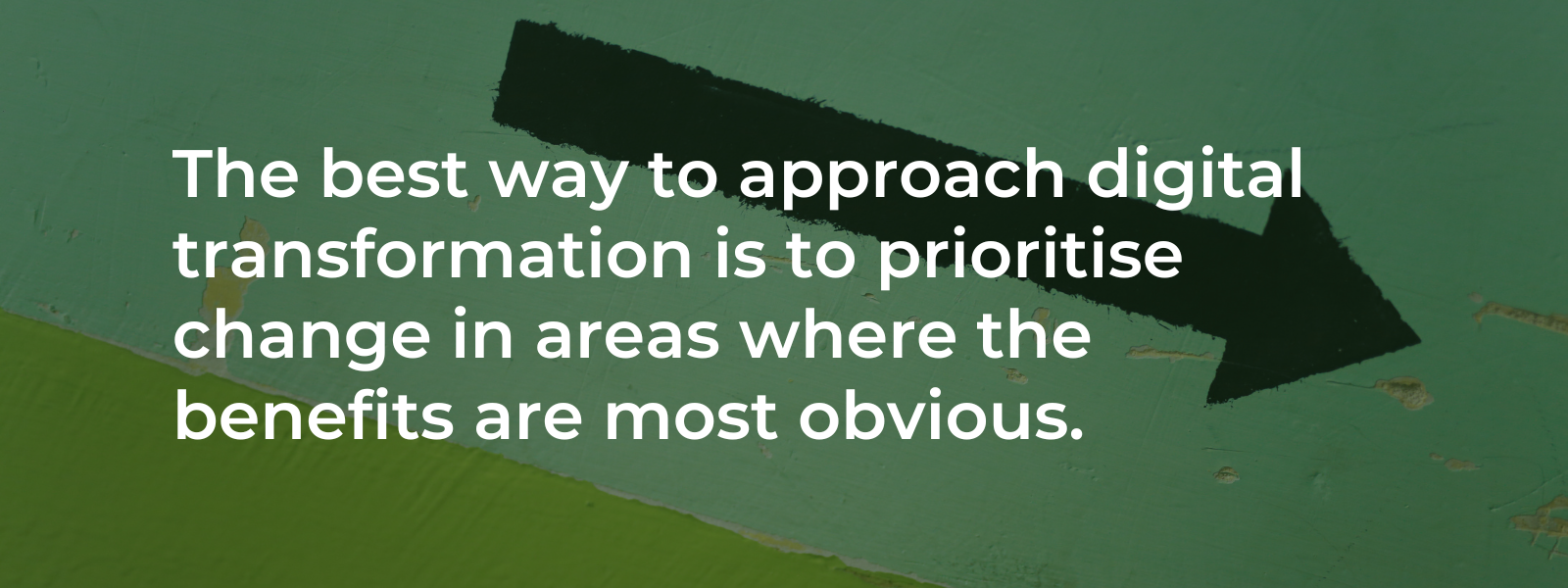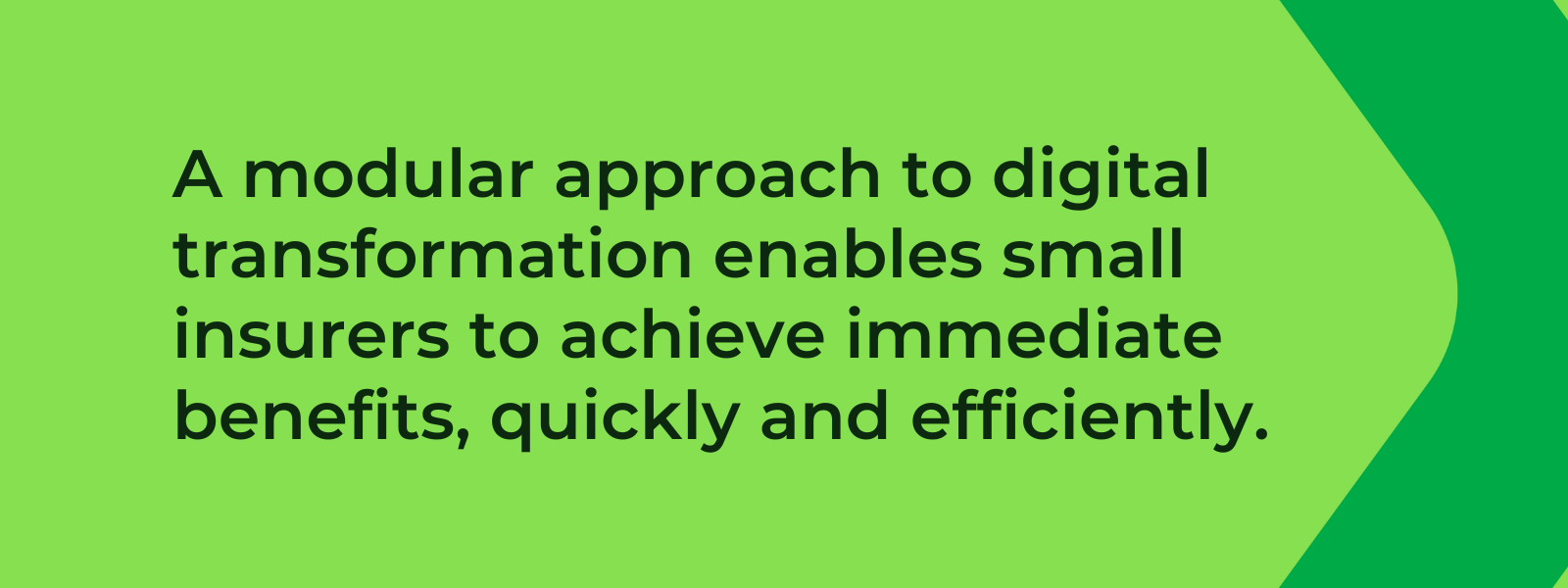Experimentation without risk: how smaller insurers can be ready for a big opportunity

The last few years have seen an acceleration of digitisation among insurance providers—driven by the global pandemic, changing customer expectations, and increased pressure from tech companies entering the insurance space. It’s a world ripe for disruption; as long as you’re positioned to take advantage of it.
In order to seize this opportunity, insurance companies must be ready to innovate and experiment. But we also know that the risks are high: research shows that as many as 95% of digital transformation projects fail to achieve the projected outcomes. Understandably, many small insurers are unwilling or unable to accept this level of uncertainty if it means potentially losing millions of dollars that they don’t have to begin with.

And yet, McKinsey found that modernisation can give insurers a much-needed competitive advantage, resulting in up to a 40% reduction in IT costs as well as improving productivity, boosting accuracy in claims handling, and adding value across services.
There’s a solution for challengers in the insurance space wanting to make the most of new technologies. By taking an incremental, agile approach to digital transformation, companies can run smaller, low-risk experiments to identify opportunities aligned with customer needs and business outcomes.
The benefits of a modular approach
As the famous saying goes, the best way to eat an elephant is one bite at a time. The same is absolutely true of digital transformation. Rather than attempting to overhaul all your existing systems immediately—at significant risk and cost—small insurers can replace key pieces of infrastructure step by step.
This creates a continuous improvement cycle capable of achieving rapid change at scale over time, while realising tangible benefits with relatively small investment spend along the way. Individual business units can implement new solutions that run in parallel with legacy systems until they’re decommissioned, without causing disruption to the overall business.
That’s why a successful modular approach requires bringing in a partner with a platform that’s agile enough to build incremental transformation from the ground up. They’ll have the capability to enable fast experimentation, while supporting you through the entire life cycle of the project.

How to identify areas of opportunity
A classic mistake that many companies make is implementing a new technology simply because it’s available. The bottom line is, you don’t want to invest money in an entirely new PAS or a claims system until you have enough policies or claims to warrant that investment.
Instead, the best way to approach your modular digital transformation project is to prioritise change in areas where the benefits are most obvious—whether that’s to meet customer demands, reduce staff time and effort, or enhance the customer experience.
Research from our latest whitepaper, Radical Change Without Radical Transformation: Is it Possible?, reveals that the key pain points for the clients of insurers are around inefficient claims handling processes and a lack of availability of video chat options. This presents a valuable opportunity to enhance customer satisfaction—for example:
- introducing self-service portals where customers can easily access policies and claims
- automating back-office processes to maximise efficiency, speed, and accuracy
- building video chat capabilities into your web-based user interface.
Another possible starting point is implementing data analytics functionality that’ll enable you to gather real-time information to identify further opportunities for improvement. At the same time, having access to rich customer data can allow your business to develop highly personalised offerings that connect your services directly to customers’ needs and life events.

Act short term, plan long term
A modular approach to digital transformation enables small insurers to achieve immediate benefits, such as increasing sales, reducing operational costs, or assessing claims more quickly and efficiently. At each phase, the financial gains can be used to fund the next innovation project.
But even with short-term rewards, it’s important for companies to set their goals for the long term to deliver sustainable growth. Innovation initiatives need to be integrated tightly with key business outcomes, to avoid creating multiple side projects that are effectively siloed from the organisation as a whole. To embed low-risk experimentation and create new business opportunities, you must have a best-practice digital transformation framework that incorporates the right insurance platform.
With Axe technology, while we help you experiment in one business area, data is fed back to the rest of the organisation. This creates a single source of truth that can be leveraged in future innovation initiatives without having to rework the front end each time—saving time, money, and effort.
Having a long-term strategy will enable you to build strong foundations and architect the entire transformation project from the outset, then deliver on your vision one key piece at a time.

